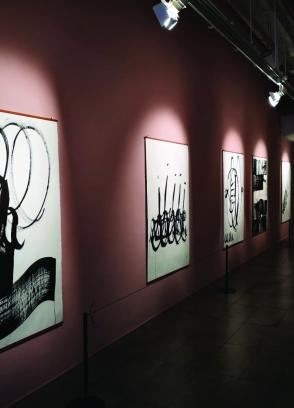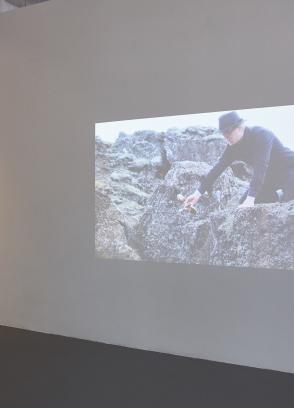Tatsuo Miyajima, Mega Death, 1999/2016. LED, IC, electric wire and infrared sensor. Dimensions variable. Domus Collection. ©Domus Collection and Tatsuo Miyajima. Installation view, Minimalism: Space. Light. Object, National Gallery Singapore, 16 November 2018 to 14 April 2019
by Lim Charlotte, BA(Hons) Fine Arts Level 2 (2019)
“A constant is the fact that we are always changing. In Western thought, permanency refers to a sense of constancy, without change. In Eastern and Buddhist philosophy, change is natural and consistently happening.”
I first encountered Tatsuo Miyajima’s work in 2016 at the Museum of Contemporary Art (Sydney), where his solo exhibition: Connect With Everything, forced me to confront time as both a construct and an irrefutable force of nature. I had to reexamine my perception of time in relation to human existence and have since completely recalibrated my artistic approach to my own meditations on the human condition. Three years after my romantic encounter with Connect With Everything, the only installation of his entire repertoire, Mega Death, was brought to National Gallery Singapore for the exhibition, Minimalism: Space.Light.Object (which ended in April 2019). I had to see it again.
Mega Death, the biggest installation of all his works, was an installation of floor to ceiling blue light emitting diodes (LEDs), customised digital counting devices of numbers ascending and descending at different speeds. He had found a simple yet striking formula to metaphorise life in all its certainty and volatility.
Wall to wall, floor to ceiling—the visual experience was spellbinding; except for the little to no audio of mechanical clicking sounds, a certain stillness filled the space. As you became physically engulfed by the vastness of this matrix, you experience a sublime sensory experience. I sat, for the most part, in the middle of the installation for hours, allowing my peripheral vision to flood with lights, letting my inhibitions of the ego dissipate in the face of something as large as life.
The sensibility of the numerical system speaks to larger concepts of time, the linear boundaries of our physical relationship and existence with and in time. It is a crushing sense of futility when confronted with the minute nature of your existence, your life reduced to a single diode, a stark parallel to technology in modernity—our lives turned into statistics for arbitrary values in self-imposed systems.
Your field of vision morphed from the macro to the micro, submerging and emerging in and out of focus, travelling from lone diodes that seem stationary in its programmed scaling, to a blinding landscape of neon blue seemingly malfunctioning every time a diode reaches the end of its descent. When this happened, the light diode goes out and is unlit; it ceases to exist—the concept of zero resides inherently in the work by nature of its absence.
At intervals, a Mega Death occurred when all the light diodes went out at the same time without warning. Pitch black, a type of violence in creating a space so pregnant with possibility, it transverses dimensionality and leaves you tethered only to the abstract memory of the blue and situated you within the zero— Mega Death—a conversely peaceful experience (despite its initial shock) when contrasted with the experience of blinding lights. The uncertainty of this ‘absence’ remained for a length of time that I can no longer keep track of; the lights would start up gradually with the sporadic reappearance of single diodes across the walls. The cyclical motion of the numbers and the blackouts are cycles in relation to each scale, the singular person, the plurality of the people, birth, life, and death. I cannot claim to understand Miyajima’s work in all its beauty and depth; so I will end this very long thought with the artist’s own words: “A constant is the fact that we are always changing. In Western thought, permanency refers to a sense of constancy, without change. In Eastern and Buddhist philosophy, change is natural and consistently happening.”




